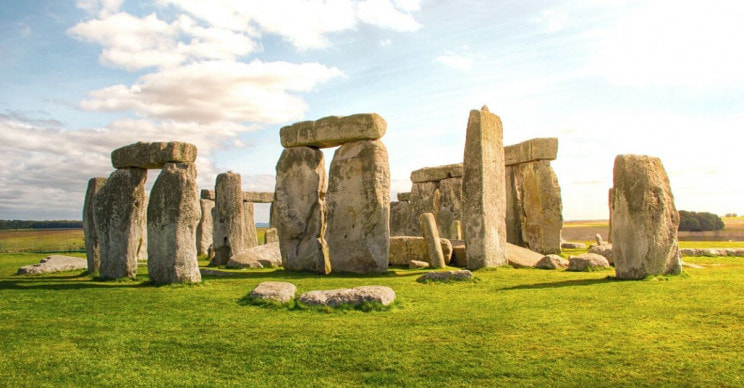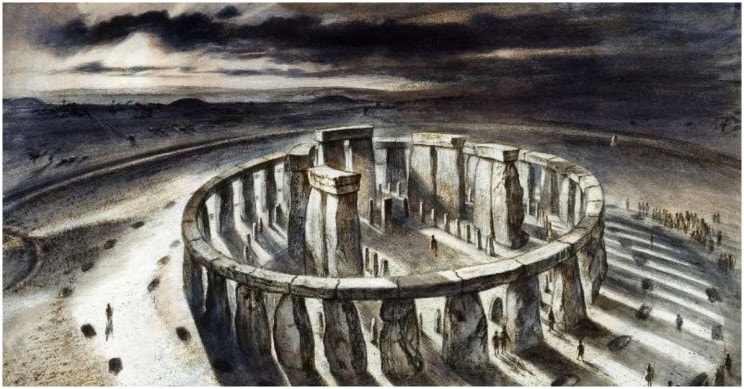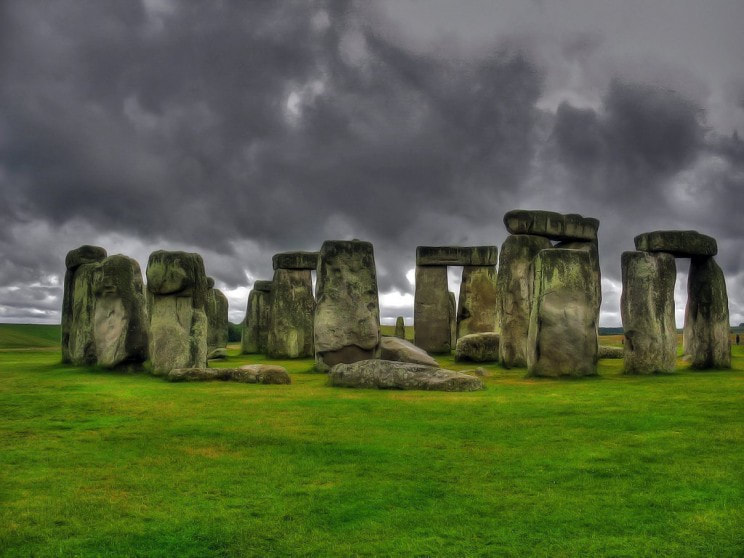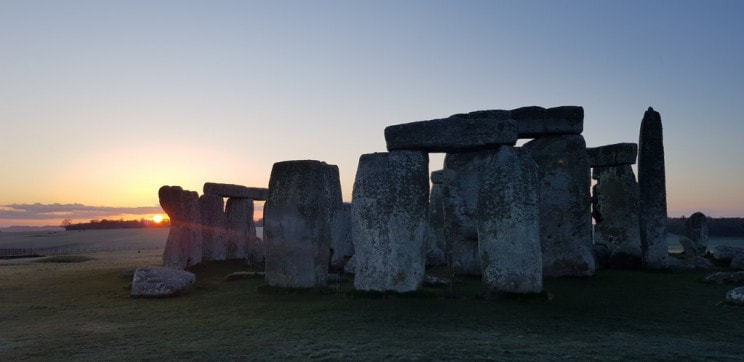|
How and when was Stonehenge built? Who's the mind behind it? We may never really know, but here are the most likely answers. Stonehenge is one of the United Kingdom's most treasured monuments and one of the world's most mysterious ancient sites. Its enormous stone structures, and massive size, have attracted scientists and tourists for centuries, but why and how was it built? Here we will attempt to answer these deceptively simple questions, and explore some other interesting information about the site. Who built Stonehenge and why? Stonehenge is one of the world's most iconic and mysterious ancient monuments. It was built on what is today Salisbury Plain in Wiltshire, England. Given its size and scale, it must have been a site of incredible importance to the people who built it. But why exactly did they bother making such an enormous effort? The problem is we can only really make educated guesses as to why these ancient people built it. Suggestions range from an enormous celestial calendar to an ancient druid temple. However, the most compelling explanation comes from more recent excavations. Large amounts of human bones have been found at the site, most of which show signs of cremation. This appears to indicate that the site was a highly sophisticated ceremonial burial ground. Other discoveries also seem to support this theory too. "In 2010 archaeologists discovered a second stone circle located just over a mile away from the more famous landmark. Dubbed “Bluestonehenge” for the 25 Welsh bluestones that originally made up the site, this secondary monument provides more evidence that Stonehenge could have been part of a huge memorial complex where high-ranking individuals took part in elaborate rituals and ceremonies honoring the dead. Yet as no written records exist, this theory—like all those about Stonehenge’s purpose—can only remain a matter of speculation." - History.com. When was Stonehenge built? Stonehenge was built between 3000 BC with major additions occurring between 2500 and 2200 BC. Other minor alterations also appear to have continued at the site until around 1500 BC. This places its construction between the Neolithic and Bronze age. How was Stonehenge built? Given the age, size, and scale of Stonehenge, it is wondrous thinking just how people in the Neolithic age were able to build such a thing. Without the benefit of metal tools and modern construction equipment, somehow they managed to build something that remains largely intact today. Unsurprisingly there have been various theories put forward as to just how it was done, but the general consensus is as follows. We have used English Heritage as the main source for this information as they are the de facto custodians and authorities of the site today. As far as we can ascertain, the construction of the site broadly followed the following sequence of events: 1. The first monument was a large earthwork Although impossible to pin down an exact date, the first monument on the site that would become Stonehenge occurred in around 3000 BC. It consisted of a large circular earthwork enclose and appears to have been built by hand using simple antler tools. The excavated chalk was piled up to make the inner and outer banks of the enclosure. Within the ditch between these banks, 56 timber or stone posts appear to have been erected at some point. Archaeological investigations appear to point to the fact that this site was used for cremation for at least several hundred years. 2. The first stones were erected At around 2500 BC, the site appears to have undergone a massive renovation. The enormous Sarson stones and many smaller Bluestones were installed within the enclosure during this work. Given the scale and size of the project, this must-have taken hundreds of well-organized and dedicated individuals. The much larger and heavier Sarson stones are made from a type of sandstone that occurs naturally across southern England. It is generally believed that they were sourced from the Marlborough Downs about 32 km away from the site. At Marlborough, large quantities of the stones still lie scattered across the landscape today. The stones in situ at Stonehenge weigh, on average, around 25 tons apiece. The main Sarsen trilithons were arranged in a rough horseshoe shape with the arch of the horseshoe pointing roughly SW. Other Sarsen stones were also arranged in a circle around the main stone structure. The largest of the lot, called the Heel Stone that site just to the NE of the main site, is a monster compared to the others weighing 30 tons. The Bluestones at Stonehenge have a very different origin. Their geology identifies their source to be somewhere in the Preseli Hills in southwest Wales. While they are not actually obviously blue in color, they can give a bluish tinge when freshly broken or when they become wet. Each one weighs between 2 and 5 tons each. 3. Transporting the stones to the site This is one of the biggest mysteries about the construction of Stonehenge, Given the enormous weight of the stones at the site, how did people over 4,000 years ago get them there in the first place? "Some people believe that the bluestones could have been brought to Salisbury Plain by the movement of glaciers, but most archaeologists think that they were transported by human effort. How this was done over a distance of more than 250 kilometers remains unknown, but it is probable the stones were both carried via water networks and hauled overland. The Altar Stone is made of a type of old red sandstone from the Senni Beds, a type of sandstone that outcrops across southern Wales." - English Heritage. 4. The stones appear to have been shaped near the site In a field, just North of Stonehenge is a very large quantity of Sarsen and Bluestone fragments. This indicates the stones were worked near the site not shaped, or at least finished, prior to transport. Sarsen and flint hammerstones of various sizes have also been found at Stonehenge. It has been suggested that larger hammers were used to flake and chop the stone with smaller ones used to finish and smooth the stones' surfaces. Laser surveys of the stones have shown that some were subject to more careful stoneworking than others. Notably, the northeastern sides and the inner faces of the central trilithons were given a lot of attention. The upright stones and lintels were fitted together using some quite advanced masonry techniques too. Mortice holes and protruding tenons were carved out of the stones prior to assembly. Lintels also feature very delicate tongue and groove joints. What is interesting is that these kinds of joints are normally only found in woodworking today. 5. Raising the stones With the stones safely transported, shaped and prepared, the next step was to erect them into place. Various theories have been proposed for how this was achieved, but there is one theory that most experts agree upon. It appears, that workers at the site dug large holes with one sloping side. The back of the main hole was then probably lined with wooden stakes. The stone was moved into position and hauled upright using plant fiber ropes and a simple A-frame (or not). Weights could have been used to help tip the stone upright too. With the stone in position, the hole was then packed tight with rubble and other waste material. The horizontal lintels were a lot more challenging, however. With no evidence of cranes at this time, a timber platform was probably used to raise the lintels into position. At this point, the final shaping of the tenons probably took place to ensure a perfect fit for the mortice holes prior to final placement on their matching uprights. 6. Some bluestones are moved At around 2220 BC, some of the smaller bluestones appear to have been moved around. Originally they formed a rough double arc around the larger horseshoe formation Sarsen trilithons. At this point, some were excavated and repositioned to form their current configuration of both an oval within the Sarsen trilithons and a complete circle around them.
It is not known why this was done though. At around this time, a more distinct avenue was also built in the direction of the Heel Stone. Again no one is really sure why. What do you think?
0 Comments
Your comment will be posted after it is approved.
Leave a Reply. |
News Watch
Mind-opening news articles, editorials, videos & apparel that inspire our readers and help liberate them from the status quo. Stay informed.
Write For UsSpace WatchTop NewsNews Watch Categories
All
|
|
|
HAVE A TIP OR STORY TO TELL? JOIN TODAY & SHARE YOUR STORY!
If you have a breaking news tip or idea, please email: [email protected] Apparently Apparel® is a registered trade name and part of the ZOAT International® brands network. © 2007-2023. All Rights Reserved. Privacy Policy. All art & news content posted on this site is commentary or opinion and is protected under Free Speech. ApparentlyApparel.com is not responsible for content written by contributing artists, authors or news feeds. The information on this site is provided for educational and entertainment purposes only. It is not intended as a substitute for professional advice of any kind. ApparentlyApparel.com assumes no responsibility for the use or misuse of this material.
|
|










